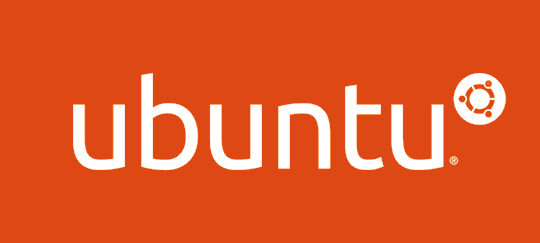Misbrands : Ubuntu and Debian

Our next entry in the misbrands series will be about Ubuntu Linux and Debian. This parodied logo is Debian’s, having “Ubuntu” written with the same font and disposed like Ubuntu’s. Unlike the previous article about Vim and Visual Studio Code that are two stand alone softwares with a similar purpose, Ubuntu shares a parent link with Debian.
Debian
Debian Logo, license LGPL v3 and CC BY-SA 3.0
Created in 1993, Debian GNU/Linux is one of the oldest Linux distributions that’s still existing. Its development is supported by the Debian Project community established by Ian Murdock. It’s one of the most famous and popular Linux distribution for many reasons. Its Stable branch ensure a very reliable technical base and is very popular among Desktop and Servers environment, with a long-term support. The distribution also supports an extensive amount of hardwares. The installation is very flexible, and the upgrades are usually very reliable. This strong reputation made Debian a basis for a lot of Linux distributions, the most prominent being Ubuntu.
Debian’s name is a portmanteau word made after Ian’s then-girlfriend, and later ex-wife, Debra Lynn and his own first name. The Debian versions are named after Toy Story characters : 1.1 was Buzz, 1.2 Rex, 3.0 Woody, etc. The unstable trunk is named after Sid, a character who regularly destroy his toys.
Debian is also well known for its deep commitment among the Free Software and GNU. The project was sponsored by the Free Software Foundation between 1994 to 1995. They have a principle of not distributing non-free softwares in the main repositories neither installing them by default. A package that is not compliant to the Debian Free Software Guidelines is usually placed into the Non-Free or Contrib repositories, while the compliant ones are present in the Main repository. These policies can provoke sometimes some arguments. For example, in 2006 Firefox was delivered as the Iceweasel fork because of the trademark Mozilla possesses over the Firefox brand. Same for Thunderbird that was forked under the name Icedove. In 2016, Debian and Mozilla came to an agreement and the name Firefox was used again.
The Debian “swirl” logo was designed by Raul Silva in 1999, during a contest aiming to replace the historical semi official logo. There is no official meaning behind the logo, some says it’s representing the magic smoke of a Genie that made the computer works, other tells about Buzz Lightyears’ swirl on his chin.
Debian is one of the first Linux distribution I ever tested, back in 2003 I would say. However, the testings were quickly interrupted as I could never start the graphical environment because of the GPU inside my computer. My first Linux distro was Mandrake 9.1 by the way, in 2002.
Ubuntu Linux

© Canonical Ltd.
Ubuntu Linux is a Linux distribution edited by Canonical Ltd, a British company founded by the South African-British entrepreneur Mark Shuttleworth. Shuttleworth was a former Debian developer during de 90’s. In 1995, he founded Thawte Consulting, a company specialized in Digital Certificates and Internet Security that was later sold to VeriSign in 1999 for $575 million back at this time. With this fortune, he founded Canonical in 2004 (after being a space tourist in 2002 in the ISS) to promote the Free Software, and especially the Ubuntu project.
The name Ubuntu comes from the Nguni philosophy of ubuntu, explained by Canonical as “humanity to others” and “I am what I am because of who we all are”. The Ubuntu logo represents three peoples seen from above, joined together by their arms. One of the keywords of Ubuntu was “Linux for human-beings”. The first version of Ubuntu was the 4.10, released on October 2004. The version numbering of Ubuntu is pretty simple : two releases a year, on April and October, so the versions are Year.Month. Starting at the 10.04, Ubuntu introduced the Long-Term Support versions that were supported for three years. The 12.04 LTS extended this support to 5 years and then, the ESM paid option extends the support for a total of 10 years. Each Ubuntu version code name is a combination of an adjective and an animal name, starting by the same letter ordered by the alphabetical order. With the exception of the first releases, each name is sequential and the alphabet returns back to “A” when the loop is complete.
Built on Debian’s architecture, Ubuntu intended to provide a more simple approach of Linux that was still considered at this time as a complicated system requiring to recompile the Kernel in order to take in account a command passed on the terminal. This cliché was very wrong, but as you can still hear it today, let’s imagine back on early 2000’s… Ubuntu’s packages are based under the Debian’s unstable branch, making the distribution far more up to date than Debian Stable. They are synchronized every six months. Ubuntu cooperates a lot with Debian and the changes they do are pushed back to the upstream distribution.
In just 17 years, Ubuntu became one of the most popular and installed Linux distribution. Despite being a derivative work of Debian, Ubuntu became itself a forked distribution and is now the basis of a very large number of Linux distros. Because of its strong connection and compatibility with Debian, and it’s very user-friendly oriented approach, Canonical was talking about 40 millions installations in 2015. Ubuntu is also very present in the big tech companies like Cloud Providers (Azure, AWS, etc) and is the operating system for some a PaaS services like Kubernetes instances. Some manufacturers (like Dell) also have a product segment with pre-installed Ubuntu computers.
Canonical also tried some other markets but without or mitigated success. They made Ubuntu Touch, a smartphone-oriented Linux distribution but the project has been abandoned and given to the community (now UBPorts). They tried to make their own Desktop environment, Unity, but the reception was mitigated and they finally reverted back to a customized GNOME environment. They also wanted to release their own display server, in parallel with Ubuntu Touch, named Mir, while Wayland was still under heavy developments, and also dropped it. This is one of the most usual criticisms against Ubuntu. They try things, which is good, but sometimes as a lonely cowboy instead of participating to a more global effort.
For me, Ubuntu is my third Linux Distribution, and the first one I’ve adopted. It was a fateful discussion with one my Internet contacts back on this time, we were discussing about our Linux tests and he told me about Ubuntu that was “very simple to install”. And also, because they were sending installations CD-ROM free of charges (when you had a 56kbps modem, it meant a lot). I’ve tried and adopted it very quickly. Around 2009, I’ve made my complete switch over on Linux and Windows became a secondary system mostly for video games (just as today) and Ubuntu was my travel mate along all these years. I didn’t liked the Unity GUI and GNOME 3 changes were also not my tastes, so I’ve changed my flavor for Ubuntu MATE which was the most adapted to me. I’ve dropped Ubuntu on 2018, after wanted to try Fedora because in my career I was mainly using Red Hat-based distros. Today, I don’t use anymore Ubuntu. I’m still using Fedora as a main distro, and Manjaro as a secondary.

